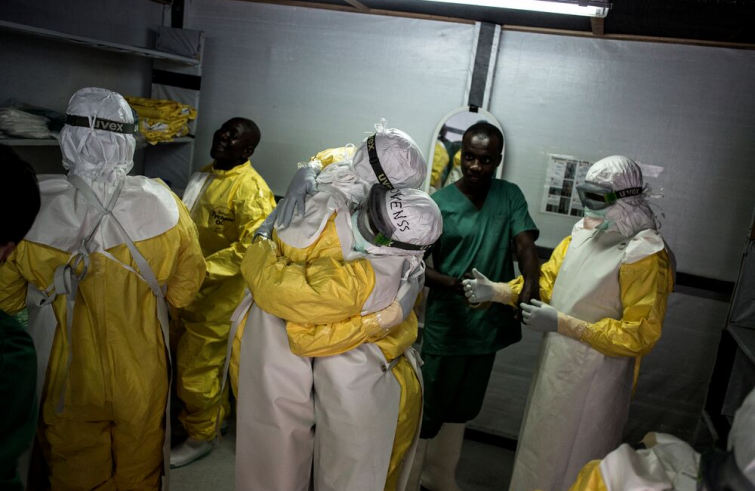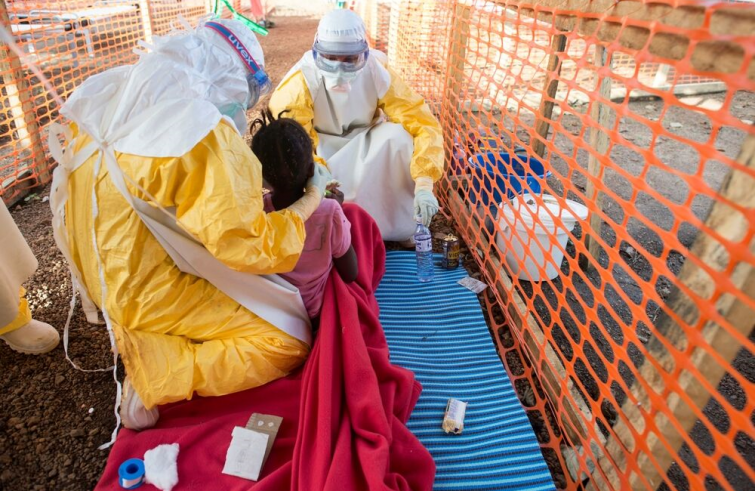
It’s the most serious epidemic in the Democratic Republic of Congo and the number two epidemic in the history of the Ebola virus. Exactly one year after the first case, on August 1, 2018, Ebola continues to be frightening and the number of people infected is not decreasing. The World Health Organisation reported over 2 600 cases, including 1 800 deaths in the provinces of Ituri and North Kivu. Victims include 700 children, 57% of whom are under 5 years of age. “The epidemic is out of control. Known cases are increasing, with over 1,000 cases in the last three months,” Claudia Lodesani, president of Médecins sans frontières Italy, specialist in infectious diseases, engaged in the 2014 and 2015 outbreak response, actively present in the Democratic Republic of Congo last year, told SIR. Two weeks ago WHO declared Ebola a public health emergency, which has been impossible to contain for over a year. Rwanda has announced that the country has closed its borders, with South Sudan and Uganda also concerned about the risk of the epidemic spreading. According to UN data, more than 770 people have survived, over 170,000 have been vaccinated, 1,300 have been treated with experimental therapies in 14 centres, 20,000 people who have had contacts with infected people have undergone daily check-ups to monitor their health conditions. 77 million national and international travellers have been screened. Médecins sans frontières has been carrying out medical activity in DRC for a long time, with Ebola-related treatment centres in Kayna and Lubéru in North Kivu, in Bwanasura and Bunia, in the province of Ituri and in Goma. It was forced to put on stand-by its medical activities in Butembo and Katwa due to violent attacks on healthcare facilities.
 What are the most worrying aspects of this epidemic outbreak in the heart of Africa?
What are the most worrying aspects of this epidemic outbreak in the heart of Africa?
It’s the first Ebola outbreak in a context of war, in North Kivu,where a low-intensity conflict has been going on for 25 years. This makes it harder for medical teams to intervene, especially for vaccination purposes, owing to difficulties in reaching out to the local population. Items of concern, inter alia, include the first case of infection in Uganda, although it was immediately isolated.
North Kivu is a trade zone and people are moving towards South Sudan, Uganda and Rwanda, with a concrete risk of disease infiltration into these countries.
A second contagion in Goma, in the DRC, is another alarming circumstance. These cases are disconnected from each other in terms of the transmission chain, making it even more worrying. It means that the virus has arrived in a large city, with a greater risk of contagion due to its large population.
What are the views of health workers engaged at local level?
The interesting thing is that
As compared to the 2014 and 2015 epidemics, we have vaccines and drugs today that weren’t available at the time.
From a technical point of view, the situation has improved, so much so that the mortality rate in the centres has decreased. However, it still remains high because people show up at clinics too late or don’t show up at all. One third of diagnoses are made post-mortem. The medical teams highlighted the communities’ diffidence. A change of perspective is certainly needed:
Communities must be involved in prevention strategies. Otherwise they will believe in rumours and false myths.
For example, they falsely believe that the virus is being spread by “whites” and that it causes sterility. So they don’t bring in the patients or get vaccinated. If we fail to approach the local populations, we will never earn their trust. These false reports are only disproved by talking to people. On top of this, it must be noted that North Kivu is one of the poorest regions in Congo, whose health system is already in crisis. Ebola only adds one new problem. In fact, 5% of patients belong to hospital staff. In the last few months we developed a strategy to support health centres independently of Ebola, so as to enable treatment of other diseases as well.
- foto: Msf
- foto: Msf
MSF had to shut down two of its centres, and there’s a conflict underway. Is the safety of healthcare workers also at risk?
There have been attacks on MSF and WHO treatment centres, including facilities run by other organizations, caused by locals who don’t want the healthcare centres – one of which was set ablaze. They think they can’t be helped given the high numbers dying in the centres. They find it hard to accept the risk that once inside the treatment centre patients might never be dismissed, although there are ways to enable relatives to see their dear ones infected, for example through plexiglass panels. But it’s not always sufficient.
Family members can’t bury their deceased because the corpses are infected…
Exactly. We have a procedure whereby when someone dies inside the centre a photo is taken, which is given to the family. The dead person is shown before closing the procedure, that envisages the involvement of family members. But surely the moment of death is the most contagious, so it is very dangerous.
- foto: Msf
- foto: Msf
- foto: Msf
Are you prepared to intervene also in bordering States, should the epidemics spread?
We have medical teams that are prepared to intervene. Precautionary measures include a measurement of people’s body temperatures when crossing the border. It should be remembered that people are not contagious until they have the first symptom, which in 90% of cases is fever. Therefore, the ministries of health of the different countries have set up temperature-screening approaches.
Is Ebola in DRC one of the many forgotten emergencies?
I think it has somewhat been forgotten. It hit the news in the past months thanks to the WHO declaration, to a lesser degree on European and Italian media, although the outbreak dates back to a year ago. But things must always be put into context: this is a region with a 25-year-long conflict, and in the same days there was an epidemic of measles.
Ebola is not the only problem. Healthcare support is needed in the whole area.
What is your request?
From a medical angle, we have more tools, but it’s not enough. Clearly, we need to change our strategy. Now we are vaccinating anyone who’s been in contact with someone infected, and whoever has been in contact with them. But if the epidemic continues to spread it means that this approach doesn’t work, so we have been requesting vaccinations for larger population segments. We need a change in the vaccination strategy – which is not up to us, even if we are partners of the Ministry of Health – and implement it in local communities. We are already doing this, but it must be done by all healthcare professionals involved on the ground.















